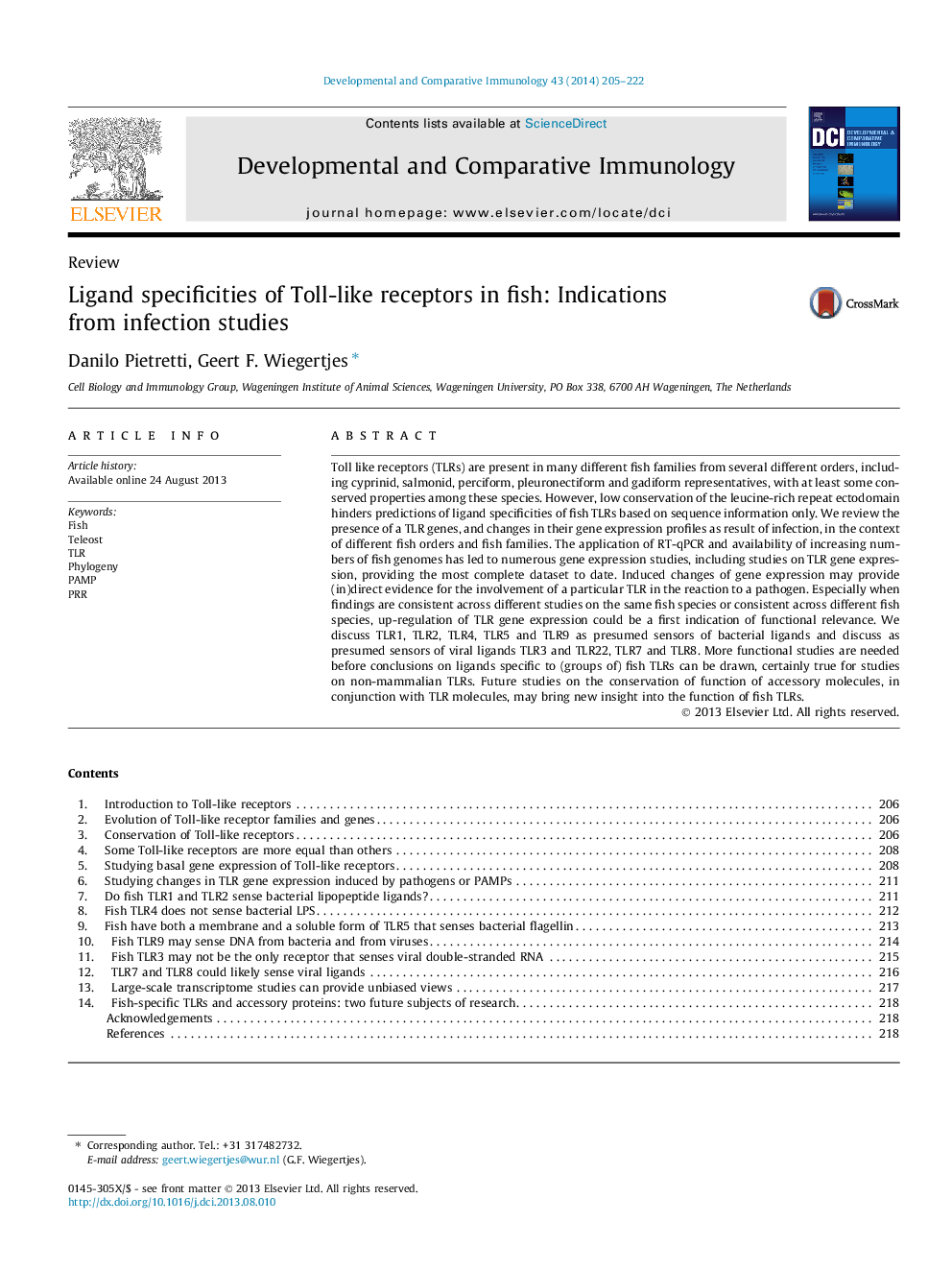| کد مقاله | کد نشریه | سال انتشار | مقاله انگلیسی | نسخه تمام متن |
|---|---|---|---|---|
| 2429295 | 1106488 | 2014 | 18 صفحه PDF | دانلود رایگان |
• We review TLR genes in fish and their gene expression profiles after infection.
• We discuss fish TLR1, TLR2, TLR4, TLR5 and TLR9 as sensors of bacterial ligands.
• We discuss fish TLR3 and TLR22, TLR7 and TLR8 as presumed sensors of viral ligands.
• Gene expression profiles provide (in)direct evidence for TLR involvement.
Toll like receptors (TLRs) are present in many different fish families from several different orders, including cyprinid, salmonid, perciform, pleuronectiform and gadiform representatives, with at least some conserved properties among these species. However, low conservation of the leucine-rich repeat ectodomain hinders predictions of ligand specificities of fish TLRs based on sequence information only. We review the presence of a TLR genes, and changes in their gene expression profiles as result of infection, in the context of different fish orders and fish families. The application of RT-qPCR and availability of increasing numbers of fish genomes has led to numerous gene expression studies, including studies on TLR gene expression, providing the most complete dataset to date. Induced changes of gene expression may provide (in)direct evidence for the involvement of a particular TLR in the reaction to a pathogen. Especially when findings are consistent across different studies on the same fish species or consistent across different fish species, up-regulation of TLR gene expression could be a first indication of functional relevance. We discuss TLR1, TLR2, TLR4, TLR5 and TLR9 as presumed sensors of bacterial ligands and discuss as presumed sensors of viral ligands TLR3 and TLR22, TLR7 and TLR8. More functional studies are needed before conclusions on ligands specific to (groups of) fish TLRs can be drawn, certainly true for studies on non-mammalian TLRs. Future studies on the conservation of function of accessory molecules, in conjunction with TLR molecules, may bring new insight into the function of fish TLRs.
Journal: Developmental & Comparative Immunology - Volume 43, Issue 2, April 2014, Pages 205–222
